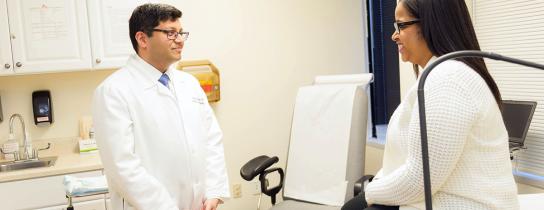
Female Urinary Incontinence & Pelvic Organ Prolapse: Overview & FAQs: As Seen in NY Metro Parents
The Different Types of Urinary Incontinence and How they can be Treated
What are the different types of urinary incontinence?
Incontinence generally is the involuntary loss of urine. Some of the common types are:
- Stress incontinence occurs during certain activities such as coughing, laughing, and sneezing. Leakage of urine occurs without the bladder contracting.
- Urgency incontinence is the type where the urge to urinate is difficult to suppress and leakage occurs. Overactive bladder is a syndrome where urgency occurs with or without leakage and is also characterized by urinary frequency and waking up from sleep to urinate.
- Mixed incontinence is a combination of the both.
No matter the type, incontinence is often detrimental to a women’s quality of life and in some cases can be very debilitating.
What is pelvic organ prolapse?
Pelvic organ prolapse is when there is a hernia of the pelvic organs. Simply put, the bladder, rectum, or uterus, or all three, can drop from the vagina. Symptoms involve pressure in the pelvic region or a bulge coming out of the vagina, and can include problems with urination or bowel movements.
What are the risk factors for urinary incontinence and POP?
There are multiple risk factors. The most common risk factors include parity (or the number of pregnancies a woman has had), advancing age, and obesity. Obesity is the strongest risk factor for incontinence. Obese women have a nearly threefold increased odds of urinary incontinence compared with non-obese women.
The rate of pelvic floor disorders increases with increasing the number of children a woman delivers. It has been estimated that 50 percent of incontinence and 75 percent of prolapse can be attributed to pregnancy and childbirth.
Advancing age also confers significant risk. In one large survey of non-pregnant women, urinary incontinence was reported to affect 3.5 percent of women aged 20-29, increasing to 38 percent of women with an age older than 80.
What should I expect at the doctor’s office?
You may need to see a specialist called an urogynecologist. The evaluation will include a detailed history and physical examination. Some other conditions, such as urinary tract infections or bladder cancer, can mimic urinary incontinence. The doctor will exclude these conditions with urine testing and treat if necessary. Sometimes a test called urodynamics is necessary. Urodynamics is performed to see how the bladder functions.
What are the different treatments options?
- Lifestyle changes should be attempted first. For instance, with urinary incontinence, fluid intake should be monitored and decreased along with avoiding things that may irritate the bladder, like caffeine.
- Weight loss can significantly decrease symptoms.
- Pelvic floor exercises like Kegel exercises can be beneficial.
- Medications can bring some relief in overactive bladder cases. These medications, however, can have side effects such as dry mouth and constipation.
- Pelvic organ prolapse can be treated by using a pessary, a device that helps lift the pelvic organs back into place. A pessary is fitted and placed during an office visit.
- If the lifestyle changes aren’t successful, surgery is also an option. Surgery for stress incontinence involves, in most cases, placement of a sling under the urethra. Pelvic organ prolapse surgery can be approached through the vaginal or the abdominal route, and even robotically.
As with other medical cases, treatment is tailored for patients to achieve the best possible outcome.
About The Author
Kaytan Amrute, M.D., FACOG, is board-certified in Obstetrics & Gynecology and Female Pelvic Medicine and Reconstructive Surgery. He received his medical degree from SUNY Health Science Center of Brooklyn. Dr. Amrute completed his residency in Obstetrics & Gynecology at St. Luke’s-Roosevelt Hospital and his Fellowship in Female Urology/Neurourology at Long Island Jewish Medical Center. He is a member of the American College of Obstetricians and Gynecologists. He currently practices at Crystal Run Healthcare’s West Nyack office.
To access the article on NY Metro Parents, click here.

 Optum Radiology at Crystal Run Healthcare
Optum Radiology at Crystal Run Healthcare Request medical records online
Request medical records online